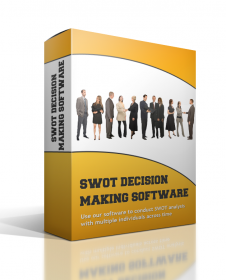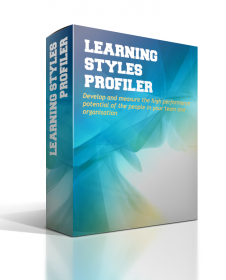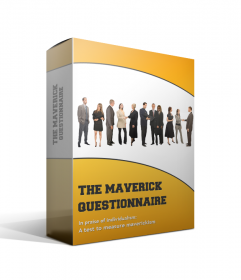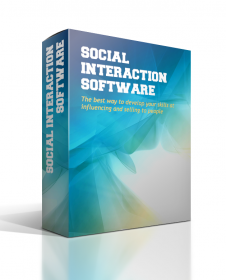However it also would be fair to say that SWOT analysis is not easy to do. Whilst organizational decision makers regularly have to identify important issues, the issues that they have to deal with are often ambiguous and frequently need interpretation as to whether they are opportunities or threats (McCaskey, 1982; Daft and Weick, 1984; Sayles, 1964; Mintzberg, 1973).
For example, some businesses see the growing demand for environmentally sound products as a threat, whilst others view it as a good business opportunity (Glass 1991). It is also believed that the predispositions to perceive threat distort the perceptions of evidence so that many possible future events are viewed as probable threat (Pruitt, 1965).
Stevenson (1976) reports that individuals' cognitive perceptions of the strengths and weaknesses of an organization are strongly influenced by factors within the individual and not only by the organizations' attributes. Stevenson found that position in the organization, perceived role and type of responsibility influenced the individual's assessment of strengths and weaknesses so strongly that it tended to submerge the objective reality of the situation. Organizational elements were increasingly perceived as strengths the higher the level of evaluator. In addition, Stevenson also found that most attributes of companies were both strengths and weaknesses. In performing a SWOT analysis these different, often biased, perceptions of strengths and weaknesses and the ambiguity of many issues may lead to incorrect classification and categorisation.
Another problem that might arise is the misuse of SWOT analysis to defend a previously decided course of action (Glass, 1991). Items generated by an individual may be biased towards his or her current viewpoint (e.g. producing more strengths and opportunities than weaknesses and threats). Often an individual has already chosen a course of action before publicly declaring his or her decision. Research has demonstrated that people look for information that supports their decision and actively avoid that which does not (Brock & Bolloun, 1967; Lowin 1967, 1969). Festinger (1957, 1964) defines this phenomenon as bolstering; when the attractiveness of the chosen alternative is magnified in decision making. Bolstering that occurs in groups involves a tendency to rely on rationalisations that bolster the least objectionable alternative.
Additionally, Nemeth and Rogers (1996) found that in decision making, individuals normally favoured information that was consistent with the majority position. A SWOT analysis is likely to exacerbate the bolstering phenomenon in an individual or group by giving the opportunity to visually reinforce positive biases using the SWOT analysis grid (e.g. producing a greater number of strengths and opportunities than weaknesses and threats).
It is also possible that SWOT analysis could facilitate 'Groupthink'. This is defined by Janis (1972) as 'a mode of thinking that happens in a cohesive group where the member's strivings for unanimity override their motivation to realistically appraise alternative course of action'. For example, in a similar way to that proposed for Bolstering, the SWOT analysis sheet could become a visual cue and opportunity for the group to generate more items to support the group's decisional direction. Janis claims that group decision making has many negative effects including over optimism, lack of vigilance and 'sloganistic thinking' about the weaknesses of outside entities. This could also contribute to a lack of items being placed in the weaknesses and threats categories.
Overcoming these problems
1. Are people focusing on the real problem?
SOLUTION: Ensure all the people in the SWOT analysis have the correct perspective
2. Are some of the issues muddled? Are they symptoms not issues, or are they simply badly stated?
SOLUTION: Clarify Issues.
3. Are issues classified in the correct time frame?
SOLUTION: Place SWOT issues in timeframe appropriate. The Positioning of issues in timeframe t1, t2 and t3 etc.is based upon your decision as to when the issues have an effect on the problem.
ou will find that it is easier to import and merge SWOT analyses if everyone names the timeframes the same!
ou may need to put the same issue in different timeframes.
4. Some issues may be seen as an opportunity or threat and some issues may be seen as a strength or weakness.
SOLUTION: Clarify why. Reallocate if necessary. Remember that the discussion is a valuable part of the process as it will help you understand what is at stake.
5. Issues are identified but further information is required to properly understand their importance.
SOLUTION: Find out what is not know about issues that could be important for future development. The more you know about the issues, the easier it is to find the solution.
6. Some issues, especially in the wider business environment, cannot be managed (for example they may be outside the sphere of control)
SOLUTION: Develop knowledge about these, think about the consequential issues that they generate
7. Issues are related to quality and the amount of available resources; financial, technological, people, etc.
SOLUTION: Know what the nature and volume of the resources are that can be brought to bear on the task.
A final point to stress is that the more you think about the issues, the clearer the solution will become. It is the process of overcoming the difficulties, specific to the problem, which will clarify the question and thereby provide the answer
For more information, use the following links:














